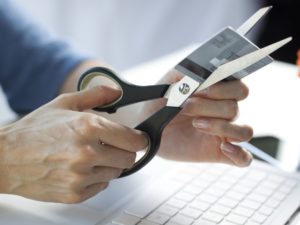The e-OSCAR method of investigating credit disputes may be the reason your credit dispute was verified when you are positive a mistake has occurred.
What is e-OSCAR
The e-OSCAR system (Online Solution for Complete and Accurate Reporting) began in 1993. e-OSCAR enables consumer reporting agencies to create and respond to consumer credit disputes automatically, without conducting an actual investigation.
What e-OSCAR does
→ Consumer submits credit dispute. An e-OSCAR two or three digit code is assigned based on the type of error claimed. This helps categorize and prioritize disputes.
→ e-OSCAR acts as a go-between the credit bureau and creditor. e-OSCAR enables data furnishers (creditors) to respond to disputes electronically and provides a platform for back-and-forth communication.
→ Credit disputes entirely automated. e-OSCAR enables data furnishers to respond to disputes electronically and provides a platform for back-and-forth communication.
What e-OSCAR doesn’t do
There’s a big problem with the e-OSCAR system. When consumers submit supporting documentation, the proof may not be reviewed and the furnisher of information (creditor) may only verify the e-OSCAR code as accurate or inaccurate.
Here is what e-OSCAR does not do:
→ Investigate deeply. Contrary to a common misconception, e-OSCAR itself doesn’t conduct in-depth investigations. It primarily manages the communication and classification of disputes. The onus of investigating and providing evidence falls on the data furnisher (creditor), which may or may not be completed.
→ Guarantee accuracy. e-OSCAR doesn’t guarantee that disputes will be resolved in favor of the consumer. The outcome depends on the evidence provided by both parties but there’s no guarantee anyone will review the evidence, even if provided by the consumer.
→ Criticisms of e-OSCAR. Limited investigation: Some argue that e-OSCAR’s automation can lead to superficial reviews, potentially overlooking legitimate consumer claims.
→ Data furnisher bias. Critics point out that data furnishers often have more resources and leverage, potentially influencing the outcome.
Why e-OSCAR is problematic
Consumer credit disputes can be unique and complex. Many dispute letters are accompanied by supporting documents and proof which is imperative to getting an error corrected. The e-Oscar method of investigation reduces often detailed credit disputes to a two or three digit code by an overworked, time constricted credit bureau employee.
It’s totally in the credit reporting agency employee’s discretion on what code best describes the dispute – this is problematic.
The e-Oscar code is transmitted to the data furnisher and the supporting documentation may or may not have been submitted. That supporting documentation is crucial to correcting errors. It’s often conclusive proof that an error has occurred. This practice is a direct violation of the Fair Credit Reporting Act.
No real investigation is ever conducted.
To make matters worse, out of the numerous possible codes the credit reporting agencies can use, they end up using the same 4 codes for “nearly 90% of all disputes.” The percentage breakdown of commonly used codes looks like this:
- Not his/hers 30.5%
- Disputes present/previous Account Status/History 21.2%
- Claims Inaccurate Information. Did not provide specific dispute 16.8%
- Disputes amounts. 8.8%
- Claims account closed by consumer. 7.0%
Take a look at the full list of e-Oscar dispute codes. This two decade old information comes from written testimony before the House Committee on Financial Services regarding “Fair Credit Reporting Act: How it Functions for Consumers and the Economy” submitted by Leonard A. Bennett of Consumer Litigation Associates, shockingly still applicable. See the full report here.
With e-Oscar consumer disputes are converted into a two or three digit code. It eliminates the consumer reporting agencies’ responsibility to conduct actual dispute investigations in compliance with the Fair Credit Reporting Act (FCRA).
Consumer Dispute Verification Form
Consumer reporting agencies use a form called Consumer Dispute Verification (CDV) to communicate disputes to data furnishers.
Data furnishers can be original creditors, debt collectors or any other entity that reports information to your credit files. The automated version of the form is called Automated Consumer Dispute Verification (ACDV).
The process by which the credit bureaus open an investigation with the original creditor or furnisher of the information is by transmitting the ACDV via the e-Oscar system.
Results of E-OSCAR Disputes
Often consumers get the results of an investigation stating the account was verified by the creditor without any details of the investigation. There is no information on who was contacted and what information was obtained to verify the account as accurate.
Because of the e-Oscar system consumers get frustrated with the dispute process and sometimes give up.
But don’t you give up! Exercise your rights under FCRA, Section 611 (a)(6) and (7) and request the credit reporting agency give you the “Method of Verification.”
Changes to e-OSCAR over the years
Over the years, the CFPB has been working to ensure the dispute process be improved and as a result, the “e-OSCAR” system has been upgraded so that the credit bureaus can now send furnishers any relevant dispute documents submitted by consumers.
2012: The Consumer Financial Protection Bureau (CFPB) reviewed how the “e-OSCAR” system did not provide a means for credit bureaus to forward to furnishers (anyone who provides information to the credit bureaus) any documents submitted by consumers.
2013: Following the CFPB’s report, the three major credit bureaus (Experian, TransUnion, and Equifax) agreed to upgrade the e-OSCAR system. The changes included:
Enabling credit bureaus to send furnishers any relevant dispute documents mailed or faxed by consumers. Allowing consumers to upload documents directly when filing disputes online. Requiring furnishers to have systems capable of receiving and reviewing all dispute information, including consumer-uploaded documents.
2015: The CFPB issued a bulletin further emphasizing the furnishers’ responsibility to review “all relevant information” during dispute investigations. This clarified that “all relevant information” now explicitly includes documents submitted by consumers through the e-OSCAR system.
2023: While the CFPB hasn’t mandated any major changes recently, they continue to monitor the e-OSCAR system and advocate for ongoing improvements. They’re particularly focused on:
- Ensuring data furnishers have robust systems for receiving and effectively utilizing consumer-uploaded documents.
- Promoting greater transparency and accountability throughout the dispute resolution process.
- Encouraging the exploration of alternative dispute resolution methods that might be more collaborative and less prone to bias.
It’s important to note that the CFPB’s role is primarily one of oversight and guidance. They can’t directly dictate how private companies like credit bureaus operate their internal systems. However, their consistent pressure and public pronouncements have undoubtedly played a significant role in driving positive changes to the e-OSCAR system, making it more fair and effective for consumers.
While there’s still room for improvement, the CFPB’s involvement has demonstrably strengthened consumer protections within the credit dispute process. We can expect them to continue playing a crucial role in shaping the future of e-OSCAR and ensuring it functions in the best interests of consumers.











